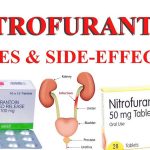
Contents
- 1 Seasonal Affective Disorder (SAD)
Seasonal Affective Disorder (SAD)
Seasonal affective disorder (SAD), formally referred to as recurrent depression with seasonal pattern, is a type of depression that occurs as the days grow shorter in the fall and winter.
SAD is believed to be caused by adverse reactions to decreasing amounts of sunlight and colder temperatures as fall and winter progress. It’s important to note that SAD can also affect people during the summer instead of, or in addition to, the fall or winter.
SAD was first recognized as an official diagnosis in 1985. It’s also colloquially called winter depression, winter blues, or the hibernation reaction.
The incidence of SAD increases the farther one is from the equator. In the United States, SAD occurs in 1% to 10% of adults and is more common in women. The average age of onset is 23 years, but people of all ages can develop SAD.
What are the symptoms of SAD?
SAD shares symptoms with depression, including tiredness, sadness, irritability, trouble concentrating, and changes in appetite and sleep patterns. In the summer, symptoms can include insomnia, poor appetite, and weight loss. Severe cases may involve thoughts of suicide.
SAD symptoms typically begin in the fall and last until spring, with intensity peaking during the darkest months.
What causes and risk factors are associated with SAD?
SAD is believed to be caused by inadequate exposure to bright light during the winter months. Bright light affects brain chemicals like melatonin and serotonin and may also be related to vitamin D levels. Geography and low levels of sunlight contribute to SAD.
QUESTION
What is the treatment for SAD?
Regular exposure to bright light, such as fluorescent lights, can significantly improve SAD. Light treatment should be used daily in the morning and evening. Temporary relocations to brighter climates can also be effective. Increased social support is beneficial for individuals with SAD.
Phototherapy, using lightboxes for approximately 30 minutes daily, is effective. The light should be approximately 25 times brighter than a normal living room light. Antidepressant medications, such as selective serotonin reuptake inhibitors (SSRIs), can also be used. Psychotherapy is recommended in combination with medical treatment.
Stimulant medications and acupuncture may play a future role in SAD treatment. Cognitive behavioral therapy (CBT) is another effective treatment option. Lifestyle changes, including spending more time outdoors, exercising, and maintaining a healthy diet, can also help reduce SAD symptoms.
What is the prognosis and potential complications of SAD?
With timely treatment, people with SAD can recover well. However, SAD increases the risk of developing other mental health disorders, self-mutilation, and suicide. It can also lead to troubled relationships, poor performance, and medical and substance use disorders.
Is it possible to prevent SAD?
Preventing future episodes of SAD through therapy or light treatment has inconsistent results, but preventive medication treatment shows promise. Health-care professionals focus on lifestyle changes and individualized preventive treatments.
Where can people get more information and support for SAD?
American Association of Suicidology
http://www.suicidology.org
202-237-2280
American Foundation for Suicide Prevention
http://www.afsp.org
National Alliance for the Mentally Ill
2101 Wilson Boulevard Suite 302
Arlington, VA 22201
Seasonal Affective Disorder Support Group
http://www.seasonalaffectivedisordersupportgroups.com
American Psychiatric Association. Diagnostic and Statistical Manual of Mental Disorders, Fifth Edition. Arlington, Virginia: American Psychiatric Association, 2013.
"Seasonal Depression." Mental Health America (MHA).


